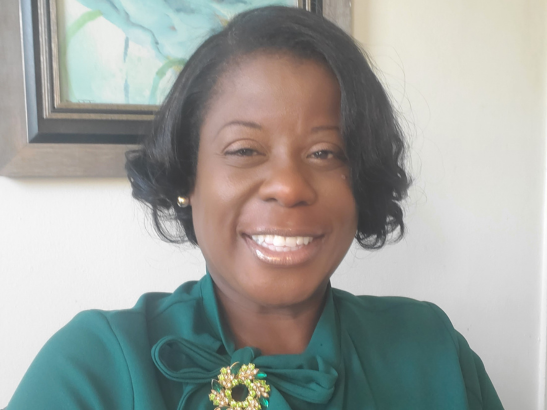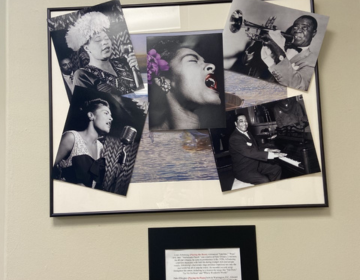
I create the mirror I want to see myself in.
This is Nina Roulac’s abiding principle in her life and work. In her role as Patient Experience Operations Manager for Penn Presbyterian Hospital in Philadelphia, she strives to create a mirror for staff and visitors to witness diversity and themselves in the context of history.
Most recently, she constructed an exhibit for Black History Month in February, celebrating everyday Black individuals from the past and the present. She featured the first Black cowboy, a Penn graduate (at a time when Black people couldn’t even receive treatment at Penn) and a Michelin-star chef, among others. Visitors were also invited to sign a guest book. For Nina, it was a chance to truly put the spotlight on diversity in an interactive way.
I always say to myself, we are all different, right? Everybody says we have the same blood — we bleed red — and this is true. But we have different experiences, and it's okay that we see ourselves. That museum was us seeing ourselves,
she says.
This particular exhibit stretched beyond familiar notable Black figures, Nina says, because she wanted people to learn new things; this was her chance to expand people’s minds around representation.
There’s Martin Luther King Jr., and we may say some things about Malcolm X and Maya Angelou and Frederick Douglass, but I wanted people to see that hey, we serve, we ride horses, we swim — all of that,
she says. I wanted everyone to see that but in a real way, to let everyone know that we're really all the same.
Nina says:
We want the same things — we want to love our families and we want the best for them, but we do have different experiences. It's important that we all see ourselves no matter our race and our culture.
 Nina received such a positive response that she’s already thinking about her next exhibit. She wants to do it bigger and better, with plans to cover the larger Black experience, including people of Africa, Jamaica and other parts of the world. Her research process is meticulous, because she doesn’t simply want to plaster things on the wall. She wants to get the information right and give visitors a beautiful and comprehensive experience without sugarcoating history.
Nina received such a positive response that she’s already thinking about her next exhibit. She wants to do it bigger and better, with plans to cover the larger Black experience, including people of Africa, Jamaica and other parts of the world. Her research process is meticulous, because she doesn’t simply want to plaster things on the wall. She wants to get the information right and give visitors a beautiful and comprehensive experience without sugarcoating history.
It can make people uncomfortable, in a way, to read about history because we were enslaved,
Nina says. But you know, we've done many things after that. So, I think there may be some of the uncomfortability of like, what am I going to see? And so, when I would talk to people, I say, you're just seeing history, and maybe it's someone who doesn't look like you and that's okay, because you have your own history, but we can't act like we don't see ourselves. And as I said, the mirror I want to see myself in, that’s what I want to create, and Sodexo has really embraced it.
Nina says she feels fortunate she has managers who support her, not just with greenlighting her ideas but actually helping her set up the exhibits. It’s been a collaborative effort, one that she feels gives her creative flexibility and a lot of ideas on how to best curate an inclusive and inspiring experience — for patients and staff.
I believe 90% to 93% of our staff are African Americans, so it's important that they see that everything in your life is possible. It doesn't mean because you're a housekeeper, that you're less than the person who invented something or someone who's a doctor,
Nina says. I want them to see that the possibilities are endless. I'm a girl from South Philly — who would ever have thought I would be with a great company doing all these things?









